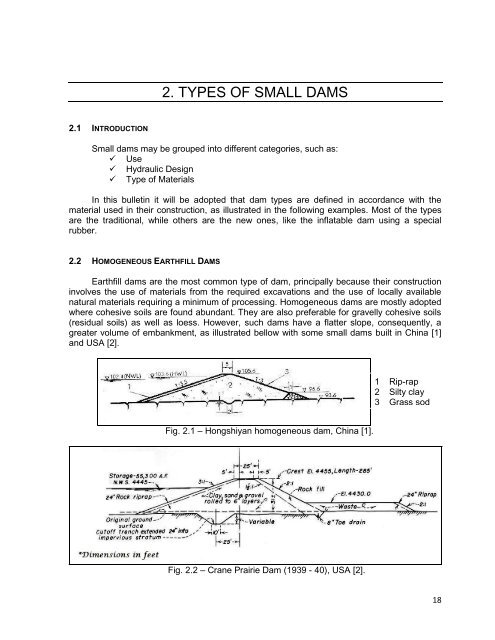SMALL DAMS PETITS BARRAGES
SMALL DAMS PETITS BARRAGES
SMALL DAMS PETITS BARRAGES
- TAGS
- dams
- petits
- barrages
- cbdb.org.br
You also want an ePaper? Increase the reach of your titles
YUMPU automatically turns print PDFs into web optimized ePapers that Google loves.
2.1 INTRODUCTION<br />
2. TYPES OF <strong>SMALL</strong> <strong>DAMS</strong><br />
Small dams may be grouped into different categories, such as:<br />
� Use<br />
� Hydraulic Design<br />
� Type of Materials<br />
In this bulletin it will be adopted that dam types are defined in accordance with the<br />
material used in their construction, as illustrated in the following examples. Most of the types<br />
are the traditional, while others are the new ones, like the inflatable dam using a special<br />
rubber.<br />
2.2 HOMOGENEOUS EARTHFILL <strong>DAMS</strong><br />
Earthfill dams are the most common type of dam, principally because their construction<br />
involves the use of materials from the required excavations and the use of locally available<br />
natural materials requiring a minimum of processing. Homogeneous dams are mostly adopted<br />
where cohesive soils are found abundant. They are also preferable for gravelly cohesive soils<br />
(residual soils) as well as loess. However, such dams have a flatter slope, consequently, a<br />
greater volume of embankment, as illustrated bellow with some small dams built in China [1]<br />
and USA [2].<br />
Fig. 2.1 – Hongshiyan homogeneous dam, China [1].<br />
Fig. 2.2 – Crane Prairie Dam (1939 - 40), USA [2].<br />
1 Rip-rap<br />
2 Silty clay<br />
3 Grass sod<br />
18














